We help schools to find new perspectives on their existing or new school buildings. Educational systems are not easily captured in square meters. We have developed the Learning Landscapes design method with co-creation workshops where students, teachers, school-boards and other people involved create their ideal learning environment. This ‘design blueprint’ functions as an optimal starting point towards a fully customised school design.
The physical surrounding affects people’s way of learning just as much as the educational process does. We believe that the school building should not only support but especially strengthen the educational system.
Time for a new vision on the learning environment
“Currently, we’re experiencing a communication gap between education and architecture. School directors and teachers aim for innovation in their schools, their culture and learning processes, but they are often hindered by the physical limitations of their building. Education specialists and municipalities, architects and contractors use different technical terminology and this often leads to miscommunication and an unsatisfying result.”
Francesco Messori – Partner / Creative Director D/DOCK
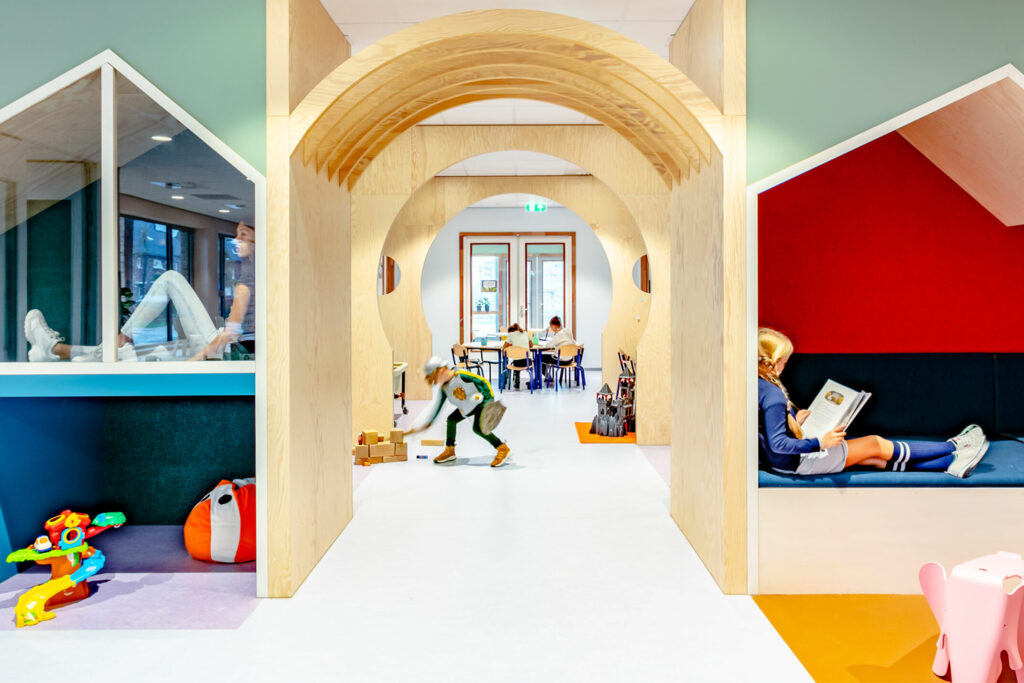
Design Method
D/DOCK’s Learning Landscapes team has done extensive research into different learning environments. Using this information as a foundation, we created systems and guiding principles to come to the design of the ‘ideal’ learning environment: the Learning Landscapes design method. This method uses interactive workshops with students, teachers, school boards and other users, with co-creation techniques to create an intuitive model with a visual set of standards for an optimal school design.
- A design model for schools that applies common language and principles for education, municipalities, architects and building contractors.
- The design process is approached from the inside out; the needs and wishes of the educational system and its future users are the starting point
- The interior design is at the core of the process; the interior determines how and where education will take place and has a big impact on how a student feels and develops.
- In a series of creative workshops with teachers, board members and other stakeholders we zoom in on the school team’s vision and determine the design brief.
- The result is a ‘design blueprint’; a design brief based on visuals instead of numbers, that includes all needs, wishes, relevant information and guidelines to trigger a new school design.
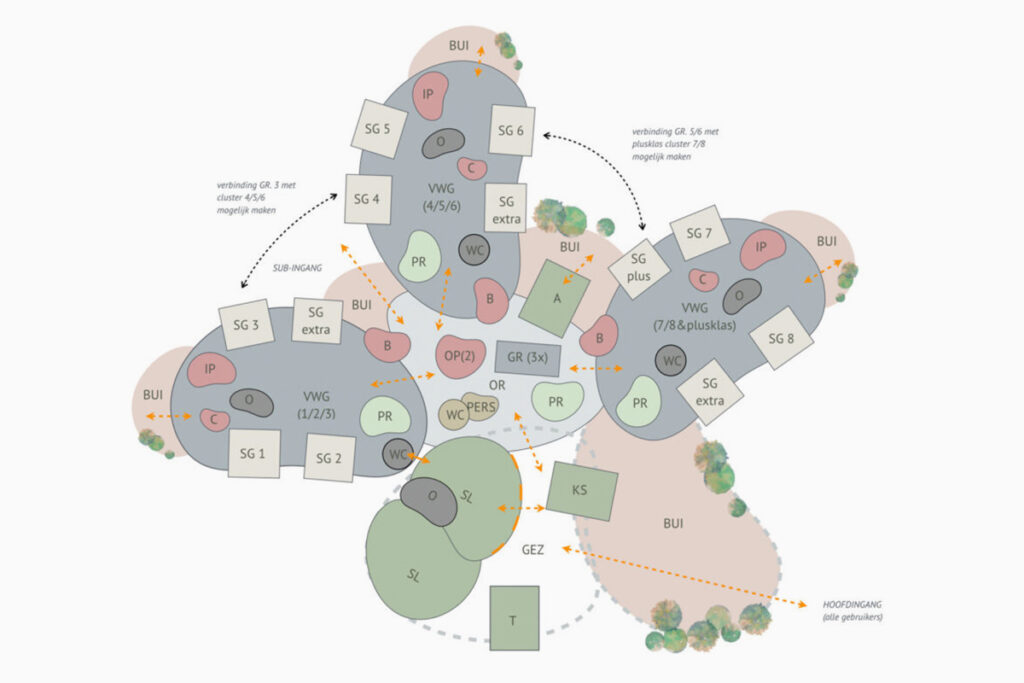
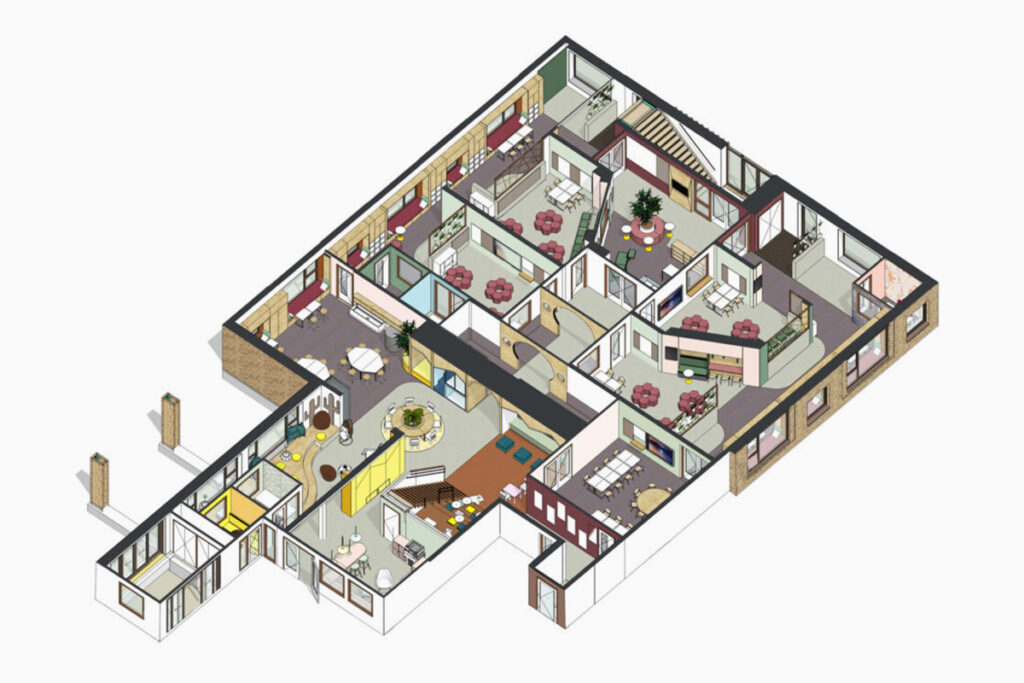
Circular System
A school is a learning environment where people want to be and feel at home. It should be a place that inspires and is part of a sharing economy for everyone who is interested in learning and sharing of knowledge and experience.
An ideal learning environment is different for each education method and style, but at its core the spaces should adapt to the educational system. This physical environment needs to support and enhance the educational system. In addition to the educational system and the physical environment there are external factors that affect the school such as society and the local community (neighbours and organisations). A school should always be open to influences from outside and take part in that: from inside to outside, and back again. It is a circular system; always in motion.
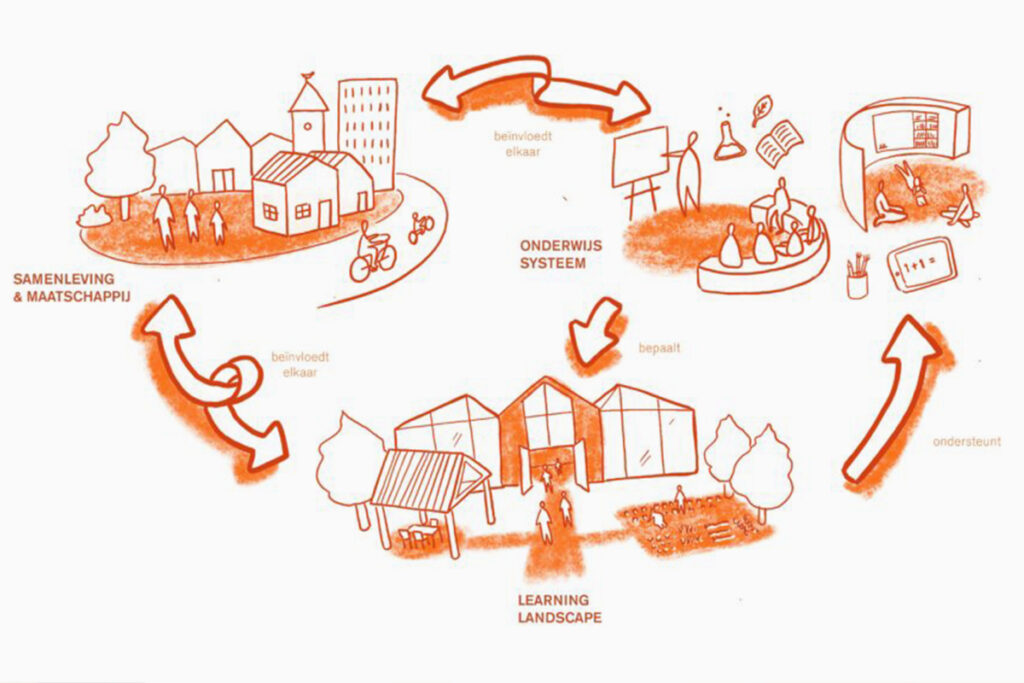
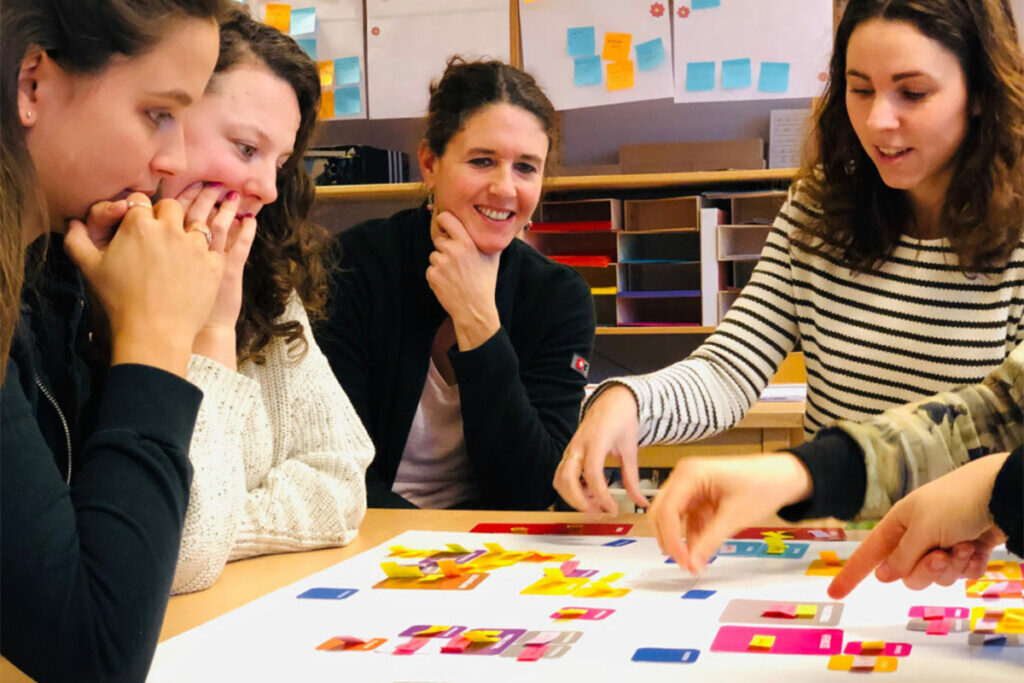
Inside-Out Design
The most important aspect in our concept is that a school is designed from the inside out. Interior and exterior at the same time. We take a look at the desired use of the space (interior) and we build a shell (exterior) around it.
During this process the outside space will be designed simultaneously. Education takes place outside as much as inside. A natural flow and balance between inside and outside is the ideal.
“I find it fascinating to see how people come up with ideas and insights in our workshops. Ideally, the physical environment serves as a means to reflect the identity of a group or an organisation. A learning environment should exemplify the vision, value system and educational model of a school.”
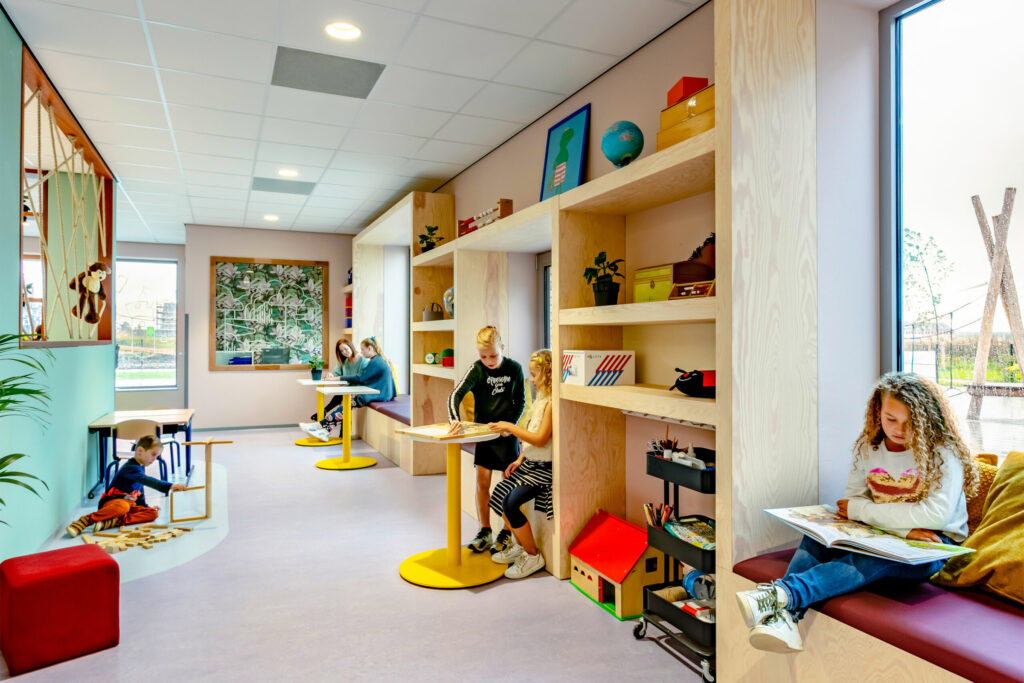

Six Drivers
- Compelling: An inspiring environment that peaks curiosity and offers delight and fun.
- Inclusive: A diverse environment that considers the unique individual needs, such as different types of working and a sheltered environment for each of its users.
- Resilient: A flexible and hybrid environment that adapts to the changing wishes and demands; from multifunctional and adaptable spaces to a possible change of function for the building in the future.
- Connecting: An open environment that promotes the sharing of ideas, spaces and possibilities between the different end-users within a local community as well as with an (inter)national network via digital media.
- Health: A sensible environment that supports the physical and spiritual wellbeing of the end-users from a healthy building in terms of air, light and mood, to healthy foods, physical exercise, a healthy spirit, safety and peace of mind.
- Biophilic Design: A natural and sustainable environment with lots of plants and greenery in the interior, plenty of daylight and sustainable materials, second life and re-use of furniture, and using greenery and nature related shapes and patterns. Biophilic design is also applied in the building’s integration into its surroundings and determines how to effectively use the outdoor space.
Hopefully, you enjoyed reading this article and you found it insightful. Sign up to our newsletter for more insights from our thought leaders and invitations to our events.
